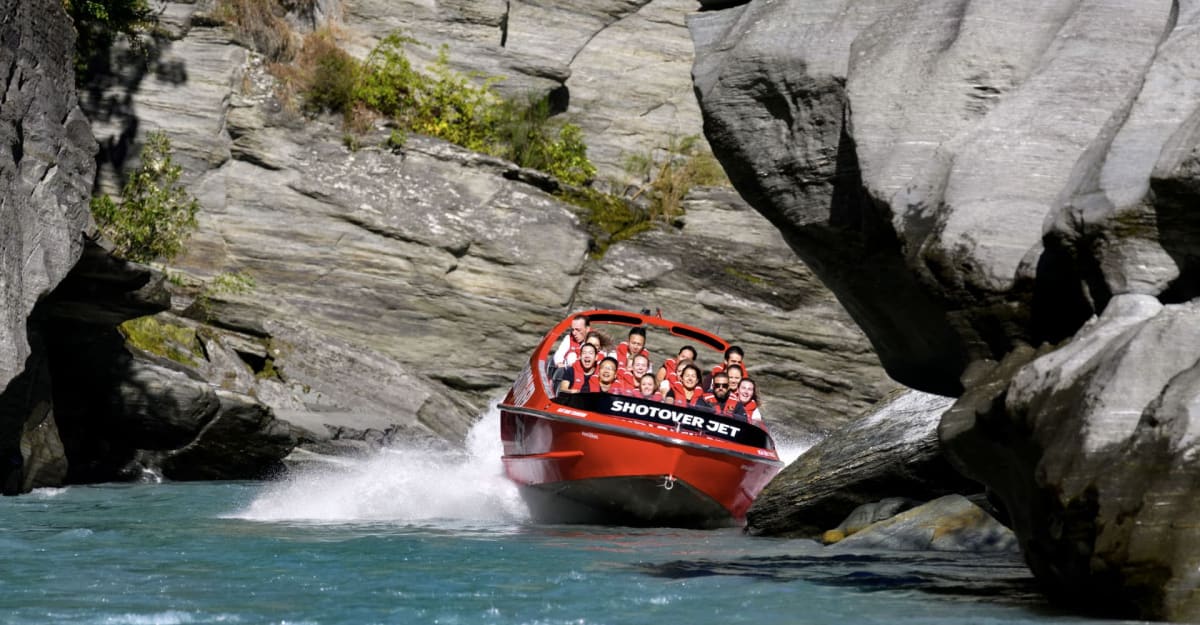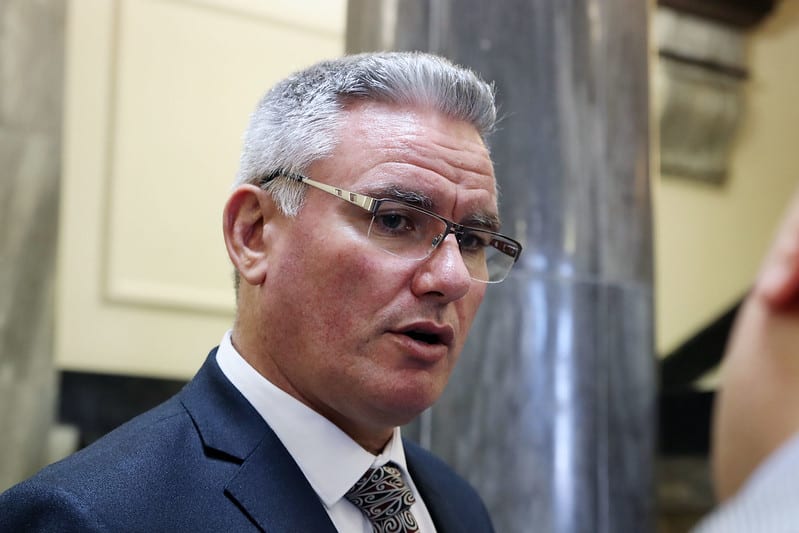In late 2017, soon after the Labour Party formed a ruling coalition, Tourism Minister Kelvin Davis spoke to the industry.
Anticipation would have been high, considering tourism seemed to have an elevated, even exalted, standing under the previous regime, with the minister being either prime minister or deputy prime minister.
Davis told Tourism Summit Aotearoa that the Government wanted to take action on issues faced by tourism businesses – from investing in regional economic growth, to protecting the environment.
“We will not sit on our hands and hope for the best,” Davis said. “You can expect this Government to be an active one.”
That same day, Tourism Industry Aotearoa (TIA) announced its sustainability commitment. The aim was for every tourism business in the country to commit to sustainability by 2025.
“We want a New Zealand where our economy, people and the environment are better off because tourism exists,” TIA chief executive Chris Roberts said.
Now, tourism is changing before our eyes – not because of Government intervention or world-leading sustainability, but the effects of a global pandemic.

Thanks to the Covid-19 lockdown there are zero visitors – either domestic or international.
South Island powerhouse Ngāi Tahu is closing its operations, including Queenstown’s Shotover Jet ride, and Hanmer Springs’ Heritage Hotel will close for good. Tourism businesses across the country are considering job cuts, as towns and regions reliant on the regular flow of visitors suffer.
There’s talk of a trans-Tasman “bubble” with Australia, but that might be months away. The only thing that’s certain is uncertainty.
A few weeks ago, Davis announced he’d tasked Tourism New Zealand, working alongside the Business Ministry and Department of Conservation, with reimagining tourism.
“We have an opportunity to re-think the entire way we approach tourism,” he said. Everything seems up for grabs – how it’s governed, how it’s marketed, how visitors are managed.
What a wonderful public message, that an under-pressure industry accused of saturating our precious natural places with tourists will re-shape itself; that it might strengthen its social licence to operate which, in some places, appears to have weakened.
There are questions, however. Is now the time for such long-term discussions? And is Tourism NZ, which is charged with marketing the country to the world, the right body to lead that conversation?
Davis tells Newsroom: “I’m very confident in their ability to do justice to what I’ve asked them to do.”
Tourism NZ’s chief executive Stephen England-Hall, meanwhile, says he’d be disappointed the industry didn’t use the Covid-19 “opportunity” to embrace big changes.
The risk remains, however, that a report cobbled together in a matter of weeks delivers a shallow, glib response at a time when the industry is on life support, or knocking on death’s door. That kind of report would too easily be thrown on a post-Covid-19 scrapheap.
Prescient prediction
Parliamentary Commissioner for the Environment Simon Upton – a former environment minister – warned of the consequences of over-tourism in his report Pristine, popular… imperilled? published last December.
It poses questions about continued growth to the country’s crowded sites, crowded skies and crowded parking lots, “the result of more than a century’s worth of promotional taxpayer subsidy”.
The report also hinted at the future. Page 152 said: “Unforeseen events – the outbreak of a global pandemic, regional conflict, the spread of protectionism or an economic downturn – could also detract from continued growth.”
Upton tells Newsroom: “I’d like to claim it was prescient but we didn’t know this was coming.”
Last month, Upton felt compelled to write to Davis about the project to reimagine tourism. While it had a “commendably long-term feel”, Upton warned the process needed to resist the urge to go back to old ways. “Your decision to nominate Tourism NZ as the lead agency for the taskforce runs this very risk.”
Now, Upton isn’t keen to rekindle the debate.
“I don’t think it helps for me to be getting in the way. My job now is to wait, give the Government time to respond, and I’ll comment in due course on what has and hasn’t been done.”
Federated Mountain Clubs (FMC) president Jan Finlayson isn’t as reluctant to criticise. She says tourism is inherently at its best “when it’s not leaving environmental and social disasters in its wake”.
“To get that slower, quieter, cleaner industry New Zealand will have to break the old model. Putting Tourism NZ at the helm of a taskforce to reimagine tourism is unlikely to break the model. It might put different paint on it.”
Consult insult
FMC was formed in 1931 and has statutory appointments to the Conservation Authority and Geographic Board. It has a proud history of environmental advocacy, playing a role in the creation of the National Parks Act, the Conservation Act and DoC.
What annoys Finlayson is being treated like a garden-variety submitter to the “reimagining tourism” process, via an email from Tourism NZ. The fear is conservation groups will be consulted and ignored.
As part of the consultation, Finlayson attended a “webinar” involving Davis, England-Hall and Air New Zealand’s Cam Wallace. However, Davis’s internet connection suddenly died.
Until then, Finlayson says, there had been relatively positive talk about the future. Then it turned to “same old”.
“I felt that we were just talking about how to get back to business as usual, as fast as possible. I may have misinterpreted that but it didn’t give me cause for great confidence.”
(Some of the industry’s push to reopen is from genuine concern tourism businesses will fail. Last week, TIA boss Roberts urged the Government to allow New Zealanders to travel within their own country at Level 2, warning that keeping the tourism industry closed for weeks, if not months, will put thousands of jobs and hundreds of businesses at risk. He pointed to how only 2000 of 25,000 Ruapehu ski season pass holders live within 100km of the mountain.)
Finlayson wants tourism in this country governed by a multi-party agency, with conservation groups at the table. She says improved public transport might also give visitors more options, other than tripping around in hired cars and vans.
“There are so many ways of doing this differently that, I suspect, won’t be on Tourism NZ’s radar.”
She worries the country has been commoditised, in an inappropriate, dispassionate way. “New Zealand is not a product.”
Keeping an open mind
Tourism NZ boss England-Hall says his organisation, the oldest tourism board in the world, has provided different services to the country over the years, and now it’s being asked to pivot again.
Would it advocate to cut its budget, if that’s what most people wanted? “If that’s in the best interest of New Zealand, then why not?”
Whatever the future looks like, it won’t look like the past, England-Hall says confidently.
“There’ll be different operators, there’ll be different product, there will be different consumer behaviours and patterns, as a consequence of Covid, internationally and domestically.”
The initial thinking, he says, is for a “principle-based vision” for tourism. The big pieces of the puzzle include “regulatory frameworks, legislation, and local and central government”.
Davis, the minister, is similarly, and understandably, vague.
“There are going to be changes. The extent of those changes, you’re going to have to wait and see, after all the feedback has come in. Over the coming years it’s going to be a lot slower, the numbers of international visitors, and that does give us an opportunity to make some significant changes.”
Davis wants to see “values over volume”, while ensuring environmental protection and benefits to communities from tourism.

These themes seem strikingly familiar. Remember TIA’s sustainability commitment from 2017? And Davis’s comments at the time about investing in regional economic growth and protecting the environment?
Values were also at the centre of the ‘Tiaki promise’, encouraging Kiwis and overseas visitors to act as guardians. When Davis and Conservation Minister Eugenie Sage launched the country’s tourism strategy a year ago, the aim was “to deliver benefits to New Zealanders through productive, sustainable and inclusive tourism growth”, with natural and cultural heritage “at the core”. More money went to tourism and conservation projects last August, when $18 million was allocated from the new international visitor levy.
Cynics might say this process has been set up to achieve something tourism chiefs were already aiming for. Finlayson, of FMC, expresses concerns about what she calls a marketing-related echo-chamber.
National and regional video conferences held in recent weeks to discuss the industry’s future have been well attended, by all accounts. But it’s fair to assume many tourism operators are there to glean information useful for their business’s survival.
One tourism boss tells Newsroom they listened in to hear facts, adding: “I don’t care about pretty marketing messages.”
Industry players will have been seeking hints about ongoing taxpayer subsidies, and an idea of how travel restrictions might work under different alert levels.
There are a stack of other questions to answer. How will a domestic marketing campaign work, and what roles will Tourism NZ and regional tourism organisations play? Will some regions get more of the marketing budget? Crucially, when might borders re-open, and how long will visitors be quarantined?
That kind of business intelligence might not come from Davis. He admits he hasn’t discussed a review of the international visitor levy with fellow minister Sage.
Asked when the border might re-open to overseas tourists, Davis says: “It’s too early for me to say.
“The appropriate ministers at the appropriate time will make the appropriate decisions with all the appropriate information in front of them. It’s not for me to make those calls.”
Follow the money
Upton, the Parliamentary Commissioner for the Environment, raises some interesting points about the future of tourism.
In 2019, the Government spent $111 million on marketing the country to overseas tourists, and a further $64 million, from the Provincial Growth Fund, on tourism attractions and infrastructure.
“Is this the best way to be spending public money?” Upton asks. “We don’t do this for many other industries.”
Another worthy discussion is the role of the Department of Conservation.
The second part of Upton’s tourism report, due out by the end of the year, will make recommendations about the future of tourism. He says New Zealanders have to be happy with the terms of access to our conservation estate, to ensure the essential qualities of our special places are preserved.
Upton raises the example of aircraft noise in remote and pristine environments. Is that being managed appropriately? And does DoC have the necessary tools to regulate it? “Those are appropriate questions to ask,” he says.
In February, as Covid-19 concerns were spreading but were largely confined to China, the Government gave Tourism NZ an extra $10 million to market the country to unaffected countries.
That was a tactical response, Upton says. It’s time for the industry to be more strategic about the threats it faces.
As his report from last year states, climate change poses an existential threat. This country’s tourism industry must grapple with the huge problem of emissions from long-haul travel.
“Domestic emissions may well be manageable but at the global level there have to be serious doubts about whether tourism in its current shape and form can continue if we are to have a chance of heading off the worst consequences of climate change,” Upton’s report says.
Asked if climate change is part of the Tourism New Zealand-led project, Davis says: “It’s not part of the discussion.” He’s also adamant the country doesn’t have too many visitors.
FMC’s Finlayson retorts: “Well, it’s not re-imagining, is it?”



